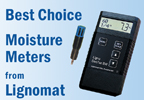OSHA Switching from Hard Hats to Safety Helmets |
|
| Contributed by BSM Staff | |
WASHINGTON -- OSHA recently announced plans to require its personnel to switch from hard hats to safety helmets. Workplace safety equipment, including head protection, has evolved over the years. As industries strive to enhance worker safety and reduce the risks of head injuries, more advanced and protective modern head protection, safety helmets, are replacing traditional hard hats. An OSHA Safety and Health Information Bulletin (SHIB) dated Nov. 22, 2023 presents the key differences between safety helmets and traditional hard hats, describing the advancements in design, materials, and protective features that help to protect the worker’s entire head. This SHIB also provides instructions for properly inspecting and storing head protection, whether it be a safety helmet or a traditional hard hat. With a thorough understanding of the benefits and capabilities of head protection options, employers and workers can make informed decisions on which to use. The significance of head protection in hazardous work environments cannot be overstated. For decades, traditional hard hats have been the go-to choice for protecting workers' heads. Made of rigid materials like high-density polyethylene, traditional hard hats provide a basic level of protection. However, as technology and scientific understanding of head injuries have advanced, safety helmets provide further improvements to enhance worker safety and reduce the risk of severe head trauma. One of the differences between traditional hard hats and safety helmets lies in their construction materials. While hard hats are made of hard plastics, safety helmets incorporate a combination of materials, including lightweight composites, fiberglass, and advanced thermoplastics. These materials not only enhance impact resistance but also reduce the overall weight of the They may also have built-in hearing protection and communication systems to facilitate clear Employers should evaluate workplace hazards to determine the most appropriate head protection for each situation. If head protection is needed for the job, employers should consider investing in better head protection with safety helmets to better protect their workers. According to the Bureau of Labor Statistics, in 2020, head injuries accounted for 5.8% of nonfatal occupational injuries involving days away from work. Determining when to use a safety helmet on the job Recommended Uses for Safety Helmets 2. Oil and Gas Industry: In these sectors where workers face multiple hazards, including potential 3. Working from Heights: For tasks or jobs that involve working from heights, safety helmets offer 4. Electrical Work: For tasks involving electrical work or proximity to electrical hazards, safety helmets 5. High-Temperature Environments: In high temperatures or where there is exposure to molten materials, 6. Specialized Work Environments: Jobs that require integrated face shields, hearing protection or 7. Specific Regulatory Requirements: Where safety helmets are mandated by regulations or industry 8. Low-Risk Environments: Even in settings with no overhead hazards, safety helmets will provide Properly storing head protection is crucial to maintain its structural integrity and to prevent damage, ensuring it functions effectively when needed. Inspecting head protection, such as safety helmets, before each use helps OSHA identify signs of wear, damage, or expiration, ensuring that they are in optimal condition and can provide the Always refer to the manufacturer’s guidelines for care, use, and storage. How to properly care for your head protection: 2. Inspect Shell and Suspension System: Before using your head protection, carefully inspect the outer shell for cracks, dents, or other signs of damage. Run your fingers over the surface to check for any 3. Check for Labels and Certification Marks: Look for labels and certification marks inside the head 4. Verify Date of Manufacture: Locate the date of manufacture on the head protection, typically imprinted 5. Examine Accessories and Attachments: If your head protection has additional accessories or 6. Check for Proper Fit: Before using head protection, ensure it fits comfortably and securely on your head. Adjust the suspension system to achieve a snug fit without excessive pressure points. Head protection should not be too loose or too tight. 7. Evaluate for Damaged or Loose Parts: While wearing the head protection, gently shake your head to 8. Inspect Interior Cushioning: Some head protection features additional cushioning or padding inside for 9. Assess Previous Impact Damage: If your head protection has experienced an impact or has been 10. Keep Records: Maintain a record of each inspection, noting the date, any findings, and actions taken. For more, go to osha.gov. |
|






